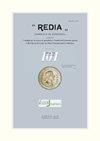NEMATODE COLONIZATION OF PYRITE CINDER-POLLUTED SOIL
IF 0.8
4区 生物学
Q3 ZOOLOGY
引用次数: 0
Abstract
The nematofauna was studied in the early stages of a remediation trial at an industrial site where pyrite cinders had accumulated for 40 years in a large area and were then covered with mineral soil. The cinders were contaminated with several metals and metalloids. The soil of the experimental plots was derived from the mixture of cinders with the covering soil in a 1:1 ratio. Plots were amended with manure and sown with 3 metal resistant plants: Sorghum bicolor L., Helianthus annuus L., and Arundo donax L. Samples were taken : a) at the beginning of the trial on the pyrite cinders and covering soil, separately; b) from the mixture before the application of manure; c) from cultivated plots. Nematode communities were compared by using general composition, trophic structure, biodiversity and ecology indices. Nematofauna and other soil fauna were not detected in the pyrite cinders. Nematodes were recorded in the covering soil and after mixing with the cinders. In these early stages of the remediation process, amending and cropping increased nematode abundance and biodiversity compared to the initial situation of the pyrite cinders. The nematode community structures and all calculated indices showed an increase in the quality of the soil after the remediation process. Our results showed that phytoremediation brought about the repopulation of an extremely compromised area. Moreover, the analysis of nematofauna could be a useful tool for assessing the degree of soil disturbance and soil remediation线虫在黄铁矿煤渣污染土壤中的定植
线虫是在一个工业场地进行修复试验的早期阶段进行研究的,那里的黄铁矿煤渣在一大片地区累积了40年,然后被矿质土壤覆盖。煤渣被几种金属和类金属污染。试验田的土壤由煤渣与覆盖土按1:1的比例混合而成。在田间施用有机肥改良后,播种3种抗金属植物:双色高粱、向日葵和冬青。试验开始时,分别在黄铁矿煤渣和覆盖土上取样;B)在施用肥料前从混合物中去除;C)从开垦的土地。利用线虫群落的一般组成、营养结构、生物多样性和生态学指标对线虫群落进行比较。黄铁矿渣中未检出线虫和其他土壤动物。在覆盖土壤和与煤渣混合后记录了线虫。在这些修复过程的早期阶段,与黄铁矿煤渣的初始情况相比,改良和种植增加了线虫的丰度和生物多样性。线虫群落结构和各项计算指标均显示修复后土壤质量有所提高。结果表明,植物修复可以使一个极度受损的地区恢复种群。此外,线虫群的分析可以作为评估土壤扰动程度和土壤修复的有用工具
本文章由计算机程序翻译,如有差异,请以英文原文为准。
求助全文
约1分钟内获得全文
求助全文
来源期刊

Redia-Giornale Di Zoologia
ZOOLOGY-
CiteScore
1.20
自引率
20.00%
发文量
18
审稿时长
>12 weeks
期刊介绍:
Redia supports its long history of basic and applied research in entomology and invertebrate zoology in the field of crop and forest tree protection responding at the same time to the increasing need of innovation and technological improvement.
 求助内容:
求助内容: 应助结果提醒方式:
应助结果提醒方式:


